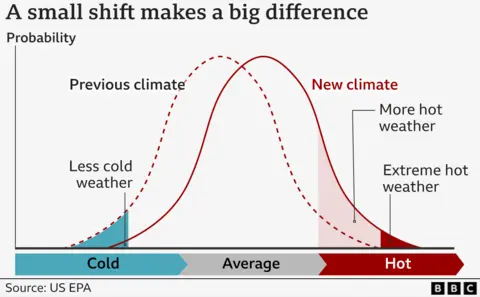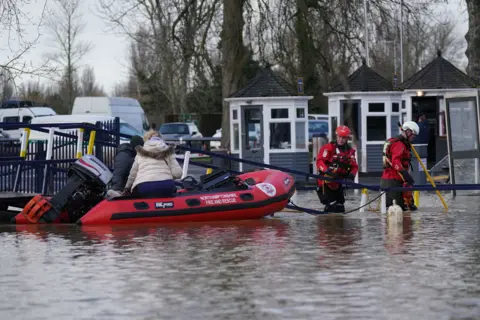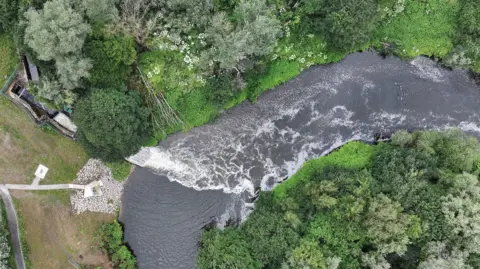UK Faces Extreme Weather as New Normal, Warns Met Office
The United Kingdom is increasingly grappling with extreme weather events, a phenomenon the Met Office has declared the nation’s “new normal.” A comprehensive report by the Met Office reveals that the UK’s climate has significantly changed over the past few decades, marked by a notable increase in very hot days and a sharp decrease in extremely cold nights. This transformation is a direct consequence of global warming, driven by substantial greenhouse gas emissions from human activities.

The latest “State of the UK Climate” report highlights that the country has already surpassed several temperature and rainfall records in 2025, further underscoring the trend towards more volatile weather patterns. This summer, large swathes of the UK, including Wales, Northern Ireland, and Scotland, have been affected by a persistent heatwave, extending beyond southern England. This follows England’s warmest June on record and the driest, sunniest spring in 132 years, leading to the imposition of the year’s first hosepipe ban in Yorkshire. Consequently, Yorkshire and parts of the North West of England were officially declared to be in drought by the Environment Agency in June, with further regions anticipated to be added to the list.
Met Office climate scientist Mike Kendon emphasized the stark reality: “Every year that goes by is another upward step on the warming trajectory our climate is on. Observations show that our climate in the UK is now notably different to what it was just a few decades ago.”
Wetter as well as Hotter Conditions
The UK’s geographical position, situated between the Atlantic Ocean and continental Europe, makes it susceptible to a variety of air masses, resulting in a naturally changeable climate. While rainfall patterns exhibit greater fluctuation than temperature, the Met Office’s data indicates a discernible trend: the UK is not only warming but also becoming wetter, particularly during the winter months. The period from October 2015 to March 2024 saw a 16% increase in rainfall compared to the 1961–1990 baseline. This intensification of rainfall, coupled with rising temperatures, is a direct manifestation of climate change, with global temperatures having increased by over 1.3°C since the industrial revolution due to unchecked greenhouse gas emissions.
The Met Office reports that the UK is warming at an approximate rate of 0.25°C per decade, with the 2015-2024 period being 1.24°C warmer than the 1961-1990 average. This warming trend is unprecedented, as evidenced by the Central England Temperature record, the world’s longest-running weather record, which shows recent warming far exceeding any temperatures observed in over 300 years. The last three years rank among the UK’s top five warmest on record, with 2024 being the fourth warmest year since records began in 1884. Even minor shifts in average temperatures can dramatically amplify the frequency and intensity of extreme weather events, a phenomenon illustrated by the changing distribution of daily temperatures, where previously rare extreme events become significantly more probable.

This shift towards warmer conditions is also reflected in the decreasing frequency of cold days. The Met Office notes a reduction of 14 days with air frost per decade over the last ten years compared to the 1931-1990 period, confirming a tangible decrease in icy conditions.
Growing Flood Risk and Nature’s Response
Flooding and storms continue to be the most damaging severe weather events in the UK. The autumn and winter of 2023-2024 saw a series of storms causing widespread flooding, particularly in early January 2024. This period marked the wettest winter half-year in over 250 years, with regions like eastern Scotland, Derbyshire, Nottinghamshire, and the West Midlands experiencing rainfall three to four times above their typical September levels. The severe weather disruptions included the cancellation of performances at the Royal Shakespeare Company due to flooding in Stratford-upon-Avon and a wall collapse in Tenbury Wells, Worcestershire, caused by rising brook water.

Met Office Chief Scientist Professor Stephen Belcher stressed the urgent need for the UK to adapt to these escalating extremes. “The climate is likely to continue to change, and we need to prepare for the impacts this will have on the weather we experience,” he stated. For the first time, the report also highlights that sea levels around the UK are rising at a faster rate than the global average. Dr. Svetlana Jevrejeva from the National Oceanography Centre warns that this trend will further increase flood risks, recalling historical events that underscore the inevitability of major storm surge events impacting the UK.
The impact of the changing climate is also profoundly affecting the natural world. In 2024, spring phenology – the timing of seasonal events in plants and animals – has shown significant shifts. Frogspawn appeared earlier, and blackbirds nested earlier than in most recorded years. Such shifts can disrupt ecosystems, particularly affecting vulnerable species like dormice and hedgehogs, which rely on stable seasonal patterns for survival. For instance, warmer weather can lead to an earlier ripening of fruits and nuts, reducing food availability in autumn when these animals need to build vital fat reserves for winter hibernation.

Research at the Alice Holt forest research centre is focused on enhancing the resilience of UK trees and forests to future climate conditions. Dr. Gail Atkinson notes that many current tree species are struggling to adapt to the changing climate, exhibiting reduced growth, “raggedy” leaves, and even death following droughts. Studies at Alice Holt suggest that coastal redwoods from California, known for their adaptability to warmer and wetter climates, could thrive in the UK. This research indicates that these towering trees might become a common feature in the British landscape in the coming decades.
For those interested in learning more about climate change, related topics such as a simple guide to climate change, how climate change exacerbates extreme weather, and actionable steps to reduce carbon emissions are available. Stay informed about the latest climate and environment news by signing up for the Future Earth newsletter.



Post Comment